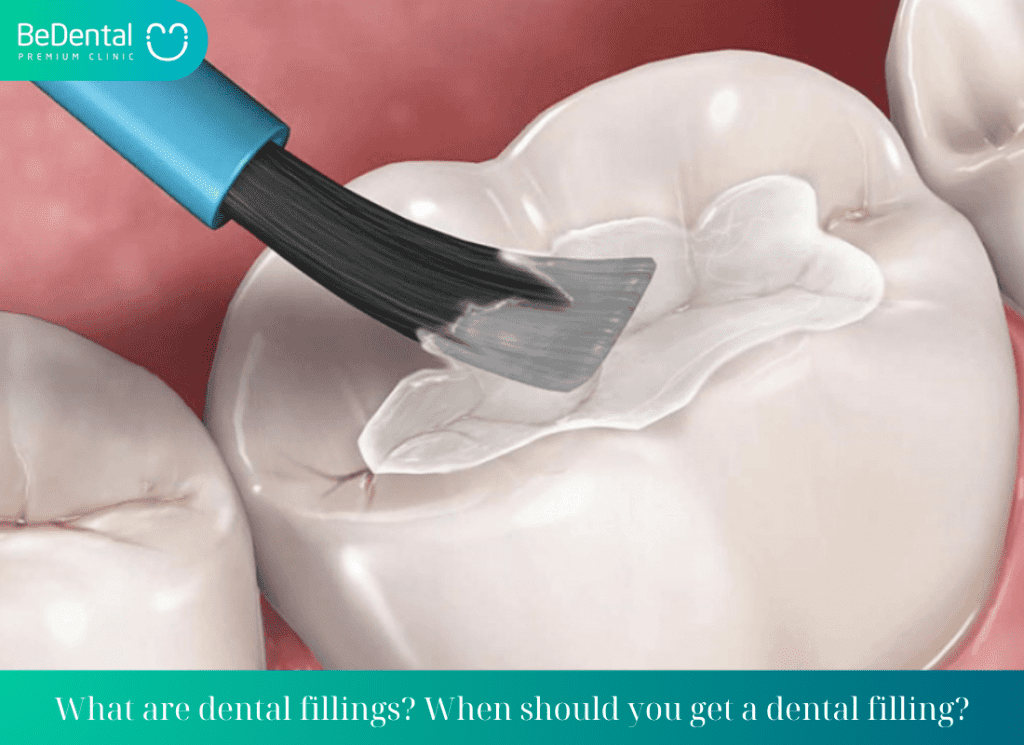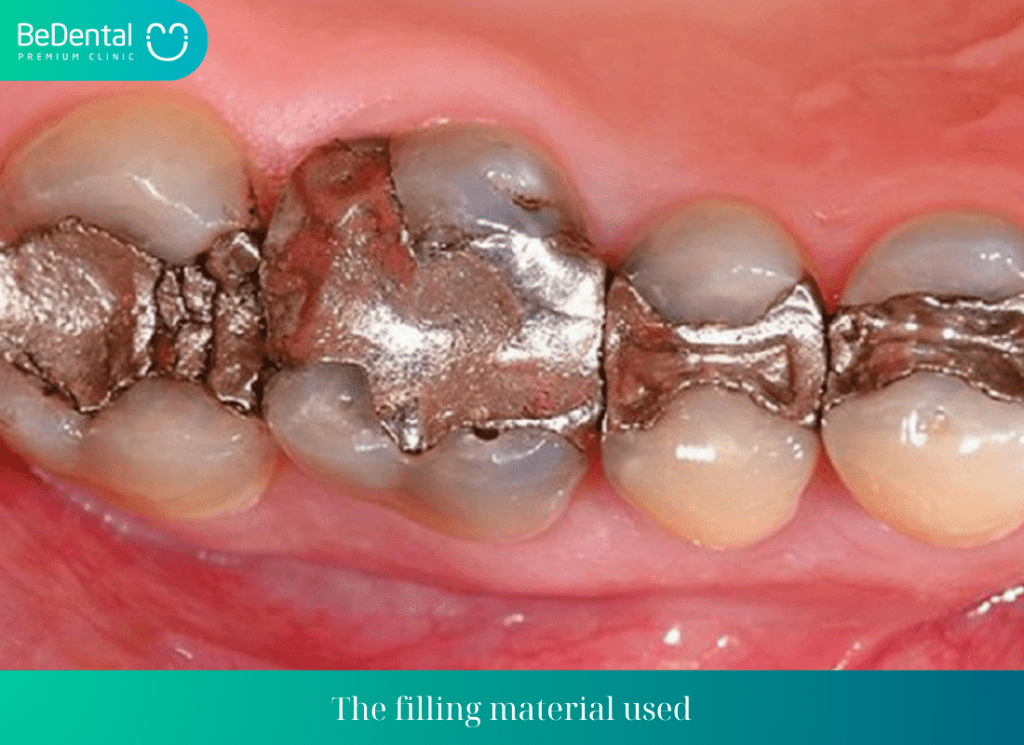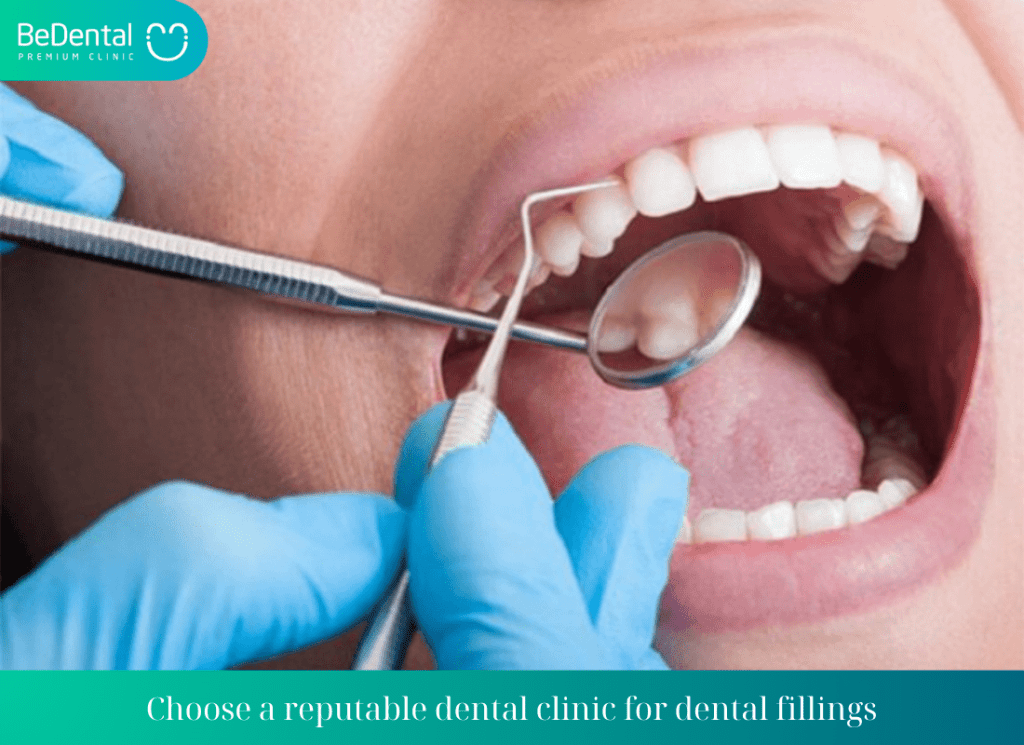Criteria for aesthetics, durability, and longevity are important factors when considering dental restorations. Therefore, many people inquire about the durability of dental fillings before needing restoration. So How long do fillings last before replacement? Explore more on this topic in the following article!
What are dental fillings? When should you get a dental filling?
What are dental fillings? To restore the shape and function of teeth, dental fillings are a common method using specialized Composite materials to adjust missing tooth structure. The filling process is typically simple, quick, painless, taking about 10-15 minutes per tooth to complete.
When filled, teeth improve in aesthetics and chewing function, reducing the risk of bacterial attacks and other harmful factors, preventing tooth decay. Usually, dentists perform fillings in the following situations:
See more: Does a root canal filling hurt?
- Teeth with minor surface cavities.
- Teeth with non-complex pulp inflammation.
- Teeth with cracks, erosion, minor enamel wear, or slight cervical defects.
- Slightly spaced or slightly open teeth, with a gap not exceeding 2mm between two teeth.
Filling should be done as soon as signs of disease or tooth damage appear. This decision helps prevent worsening conditions, affecting the inner tooth pulp, and leading to larger treatment costs and time.

How long do fillings last before replacement is needed?
When filling a tooth, filling material is applied to the area that needs supplementation on the tooth to complete its shape. This means that the durability of the dental filling will depend on several factors:
The durability of dental fillings depends on the type of filling material used.
There are various types of filling materials applied based on the condition and individual needs. Each type of material has its own advantages and disadvantages, including different durability levels. The durability of dental fillings is greatly influenced by the type of material used.
For example, amalgam or precious metal filling materials have high hardness, good chewing force resistance, long lifespan up to 5-6 years, even 10 years with gold, silver, or copper. However, they often do not achieve high aesthetic standards, and the cost of using precious metals is high, leading to fewer choices.
Composite filling materials are popular for their high aesthetics, color matching with natural teeth, good hardness, and erosion resistance. Composite fillings can last from 2-3 years.
The durability of the filling depends on the dentist and dental filling technology.
This factor plays an important role in determining the durability of aesthetic dental fillings. Even when using high-durability filling materials, if the dentist’s skills are not good, the restoration process is inaccurate, or outdated dental filling technology is used, the ability to provide long-lasting results with dental fillings will also be affected.

The durability of dental fillings depends on oral care
After getting a dental filling, diet and oral hygiene play a crucial role in influencing the durability of the filling. For example, with some filling materials like composite, fuji, they have similar colors to natural teeth but do not have high waterproofing capabilities, making them prone to color changes and affecting aesthetics. Additionally, not being careful in eating and maintaining oral hygiene can lead to the filling coming loose.
Factors affecting the durability of dental fillings
What are the Factors affecting the durability of dental fillings? The durability of dental fillings depends on various factors such as:
The condition of the tooth before filling
When the tooth has only minor decay, minimal damage, and has not affected the dental pulp, the filling can last longer compared to cases where the tooth is severely damaged and requires pulp treatment.
The location of the filled tooth
Teeth in the molar region are often subjected to strong chewing forces daily, so their durability is usually lower compared to teeth filled in the posterior region.
The filling material used
There are various types of dental filling materials available such as Amalgam, gold, silicate cement, Composite, etc. Among them, Composite is considered the safest material with high safety, non-irritating properties, and aesthetically similar color to natural teeth, gradually replacing Amalgam and Silicate due to their potential for irritation and poor aesthetics.
Composite also has good force resistance, helping meet chewing demands effectively and has a relatively high lifespan. Therefore, you can confidently choose Composite as your dental filling material

How to care for dental fillings
If teeth are properly cared for with a scientific hygiene routine, a healthy diet, and without harmful habits for teeth, the lifespan of the filling material will also be maintained longer.
For those who have habits of chewing hard, tough foods, chewing on ice, using teeth to open objects, brushing teeth too vigorously, using a hard toothbrush in a horizontal motion, these behaviors can cause strong impacts leading to the filling material coming loose, cracking quickly, and even adversely affecting the health of teeth and gums.
How to increase the durability of dental fillings
To increase the durability of dental filling materials, you need to consider the factors that affect the durability of dental fillings. This is the only way to minimize the limitations of the filling process, help maintain and effectively preserve the long-term results of dental fillings.
Choose good dental filling materials
Based on the advantages and disadvantages of each type of dental filling material, you can consider and choose the appropriate filling material. For example, amalgam or silver fillings are often chosen for teeth in less aesthetically critical areas like molars. Meanwhile, for the posterior teeth, choosing newer generation composite fillings can ensure aesthetic effectiveness and increase long-term durability.
Choose a reputable dental clinic for dental fillings
It is recommended to search for dental clinics with professional dentists and modern equipment for dental fillings. The experience and expertise of the dentist can help you achieve good restorative results, overcome the limitations of dental filling materials, provide beautiful, safe, and durable filling results.
Furthermore, choosing a dental clinic that uses laser technology is also a smart choice. Laser dental filling technology uses laser light to stimulate the filling material, helping it adhere tightly to the tooth surface, increasing the durability of the filling, and maintaining good results.

Implementing proper oral care routines
It is recommended to limit consuming hard, tough, and dark-colored foods. Avoid using teeth to open objects as it may cause the filling to come loose or even break the natural tooth. Brush your teeth correctly and use dental floss to clean between teeth, avoiding a dull appearance of the filling and maintaining the beautiful color of the filling for a long time.
Foods to avoid and eat after dental fillings
Immediately after getting a dental filling, avoid eating for about 2 hours to allow the filling material to dry and adhere firmly to the tooth.
In your daily diet, limit overly tough and hard foods. Avoid foods high in sugar, acid, and those that easily stick to teeth. Do not consume excessive dark-colored foods such as coffee, red wine, concentrated tea; avoid smoking, drinking alcohol, etc.
Stop habits like chewing on ice, using teeth to open packaging, bottles; as well as biting your nails.
Pay attention to having a balanced diet, supplementing with sufficient nutrients, increasing foods rich in vitamins and good fiber for teeth and gums, and drink an adequate amount of filtered water daily.
This article has helped answer your question about how long dental fillings last before needing to be restored? Wishing you a smooth and successful dental filling treatment process!
Role of Balanced Nutrition in Dental Filling Durability
A balanced nutrition plays a crucial role in the durability of dental fillings. Consuming a diet rich in essential nutrients such as vitamins and minerals is vital for maintaining strong teeth and gums, which directly impacts the longevity of dental fillings.
Foods high in calcium, phosphorus, and vitamin D promote dental health and strengthen tooth structure, reducing the risk of filling damage or decay. Additionally, a diet low in sugar and acidic substances helps prevent erosion of the teeth and surrounding areas, preserving the integrity of dental fillings.
By incorporating nutrient-dense foods into one’s diet, individuals can support the longevity and effectiveness of their dental fillings.
Conclusion
In conclusion, the durability of dental fillings is significantly influenced by proper oral care, diet, and lifestyle habits. Maintaining good oral hygiene practices, avoiding hard and sticky foods, and refraining from using teeth for non-dental purposes are essential for the longevity of dental fillings.
Additionally, selecting the appropriate filling material, following post-filling dietary guidelines, and choosing a reputable dental clinic for dental procedures play crucial roles in ensuring the durability and effectiveness of dental fillings.
By implementing these recommendations, individuals can enhance the lifespan of their dental fillings, promote overall oral health, and achieve successful and long-lasting dental treatment outcomes.
See more: Can cavities be braced?
Tư vấn chuyên môn bài viết:
BÁC SĨ DƯƠNG THỊ THÙY NGA





